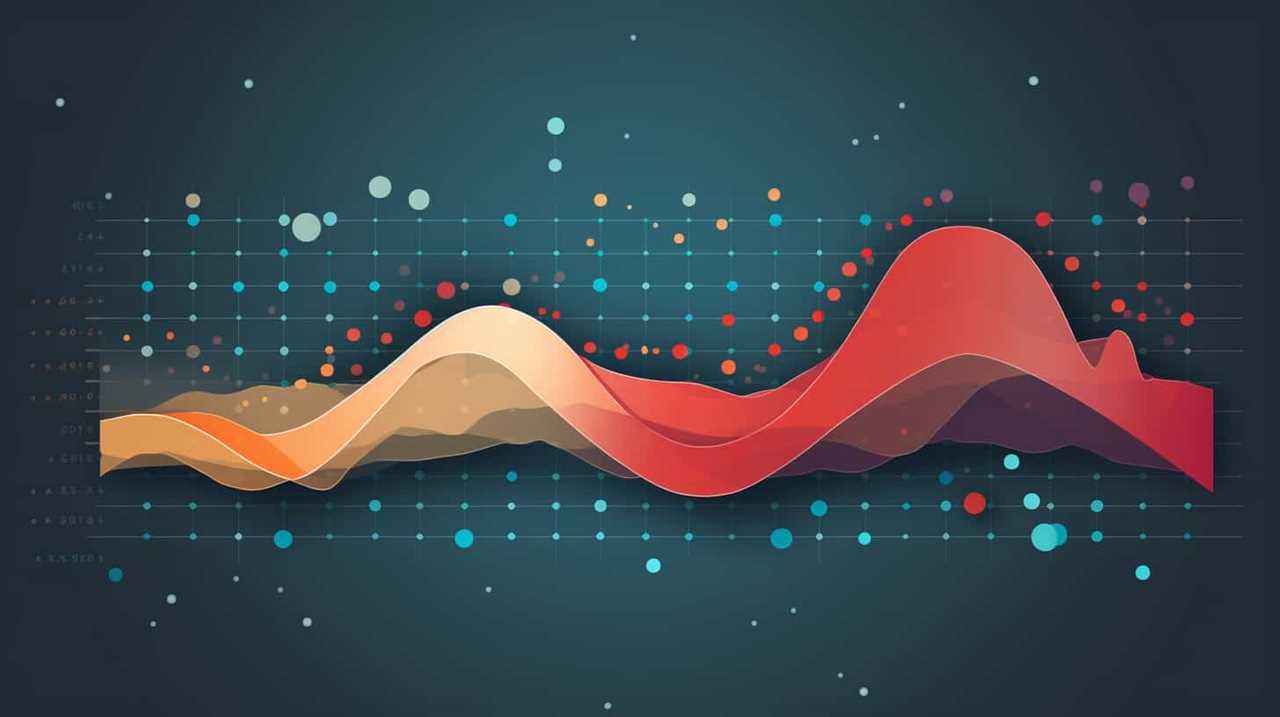Are you interested in enhancing your website’s SEO performance? We have all the necessary resources available.
In this article, we’ll show you how to optimize your website infrastructure for better search engine rankings. From choosing the right hosting provider to implementing a mobile-friendly design, we’ll guide you through proven strategies to enhance your website’s visibility and user experience.
With our expert tips and tricks, you’ll be on your way to mastering the art of SEO optimization in no time.
Let’s dive in!

Key Takeaways
- Uptime reliability is crucial for maintaining a positive user experience.
- Scalability options are essential for accommodating increases in website traffic.
- Website caching and image optimization contribute to enhancing website speed and performance.
- Well-structured navigation menus and effective internal linking improve user experience and overall visibility.
Choosing the Right Website Hosting Provider
When it comes to optimizing our website infrastructure for better SEO, one crucial aspect we need to consider is choosing the right website hosting provider. Evaluating uptime reliability and considering scalability options are key factors in making this decision.
Uptime reliability refers to the amount of time your website is accessible to visitors, and it’s important for maintaining a positive user experience. A hosting provider with a high uptime guarantee ensures that your website will be available to users around the clock.
Additionally, considering scalability options is essential for accommodating potential increases in website traffic and ensuring that your website can handle higher volumes of visitors. By choosing a hosting provider that offers scalability options, you can easily scale up your website as your business grows.
Now that we’ve discussed choosing the right hosting provider, let’s move on to implementing a mobile-friendly design.

Implementing a Mobile-Friendly Design
Now let’s focus on how we can optimize our website infrastructure for better SEO by implementing a mobile-friendly design. In today’s digital world, where mobile usage continues to rise, having a responsive design is crucial for enhancing user experience and driving organic traffic to our website. A mobile-friendly design ensures that our website adapts seamlessly to different screen sizes and devices, providing a consistent and user-friendly experience. It not only improves our website’s visibility on search engine result pages but also reduces bounce rates and increases user engagement. To illustrate the importance of implementing a mobile-friendly design, here’s a table showcasing the impact it can have on our SEO efforts:
| Mobile-Friendly Design | SEO Impact |
|---|---|
| Improved user experience | Higher rankings |
| Reduced bounce rates | Increased organic traffic |
| Higher engagement metrics | Improved search visibility |
| Better mobile indexing | Enhanced user satisfaction |
| Faster page load times | Higher conversion rates |
Optimizing Website Speed and Performance
To improve SEO, we can optimize our website speed and performance by focusing on enhancing its loading times.
One way to achieve this is through website caching. By implementing website caching, we can store certain elements of our website, such as images and scripts, in temporary storage on the user’s device. This allows for faster loading times upon subsequent visits, as the cached content doesn’t need to be fetched from the server again.
Another important aspect of optimizing website speed and performance is image optimization. This involves reducing the file size of images without sacrificing quality. By compressing images and using modern image formats, we can significantly improve loading times.

It’s important to find the right balance between image quality and file size to ensure a fast and visually appealing website.
Ensuring Effective Website Navigation
By optimizing website speed and performance through techniques such as website caching and image optimization, we can now delve into the importance of ensuring effective website navigation.
Improving user experience is crucial for retaining visitors and encouraging them to explore your website further. A well-structured navigation menu and clear site hierarchy make it easier for users to find the information they need quickly and efficiently.
Additionally, optimizing internal linking helps search engines understand the relationship between different pages on your website, improving overall visibility and SEO rankings. By strategically linking relevant pages together, you can guide both users and search engines to valuable content and increase the chances of conversions.

Now that we understand the significance of effective website navigation, let’s move on to implementing structured data markup for even better SEO performance.
Implementing Structured Data Markup
We frequently implement structured data markup to enhance our website’s SEO performance. Schema organization plays a crucial role in this process.
By implementing schema markup, we can provide search engines with additional information about our website’s content, helping them understand it better and improve its visibility in search results. Schema markup allows us to categorize and label different types of content, such as articles, events, products, and reviews, making it easier for search engines to interpret and display relevant information to users.
Additionally, structured data markup enables us to implement rich snippets, which enhance the appearance of our website in search results by displaying additional information, such as star ratings, prices, and availability. By implementing structured data markup effectively, we can increase our website’s visibility and drive more targeted traffic.

Frequently Asked Questions
How Can I Improve My Website’s Search Engine Rankings Through Website Hosting Provider Selection?
We can improve our website’s search engine rankings by selecting a hosting provider that prioritizes website security and offers features for content optimization. It’s important to consider these factors for better SEO results.
What Are Some Common Mistakes to Avoid When Implementing a Mobile-Friendly Design?
When implementing a mobile-friendly design, we need to avoid common mistakes. These include responsive design issues that affect user experience and slow loading speed, which can negatively impact SEO rankings.
How Can I Optimize My Website’s Speed and Performance to Improve Seo?
To optimize our website’s speed and performance for better SEO, we focus on website caching and image optimization. These techniques help improve loading times and overall user experience, ultimately boosting our search engine rankings.
What Are Some Best Practices for Ensuring Effective Website Navigation That Also Benefits Seo?
To ensure effective website navigation that benefits SEO, we recommend implementing SEO-friendly menus and designing an intuitive website navigation structure. These practices enhance user experience and make it easier for search engines to crawl and index your site.

Why Is Implementing Structured Data Markup Important for SEO and How Can It Be Done Effectively?
Implementing structured data markup is important for SEO as it enhances search engine understanding of website content. It can be done effectively by using schema markup to provide clear and accurate information, ultimately improving organic search visibility and user experience.
What Are Some Tips for Improving SEO Through Website Infrastructure?
Improving SEO through website infrastructure involves optimizing the technical aspects to enhance your website’s visibility. To achieve this, consider utilizing responsive web design, as it improves user experience across devices. Additionally, optimizing website loading speed by compressing images and enabling caching can boost site performance. Implementing proper URL structures and creating XML sitemaps are also essential tips for boosting website infrastructure and improving overall SEO.
Conclusion
In conclusion, optimizing your website infrastructure for better SEO is crucial for improving your online presence.
By choosing the right website hosting provider, implementing a mobile-friendly design, optimizing website speed and performance, ensuring effective website navigation, and implementing structured data markup, you can enhance your website’s visibility and attract more organic traffic.
Remember, a well-optimized website is the key to success in the digital world.

So, start implementing these strategies today and watch your SEO soar!










